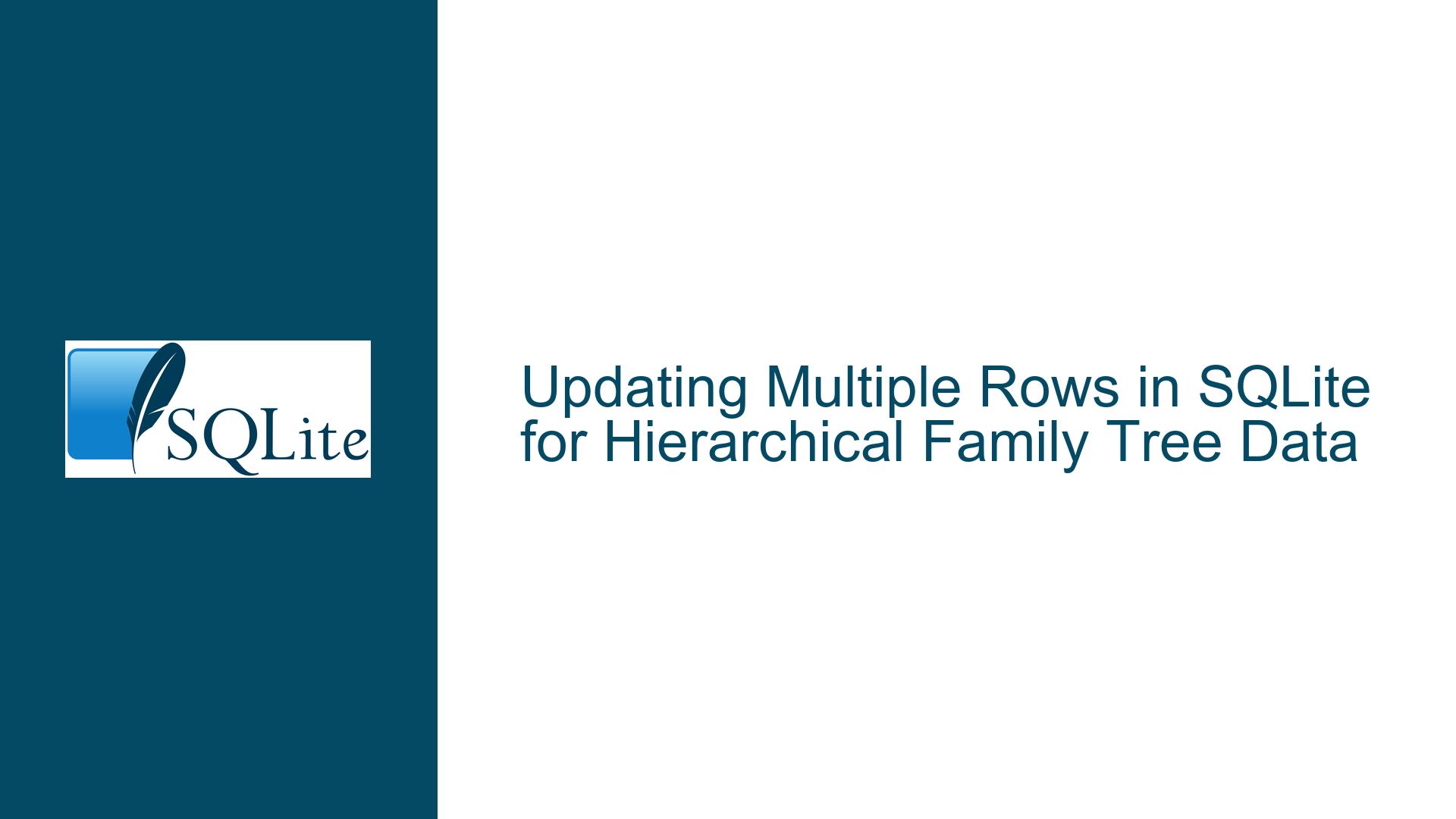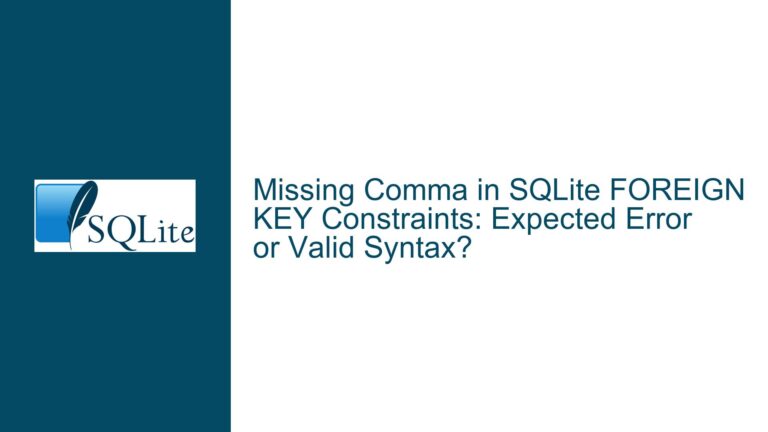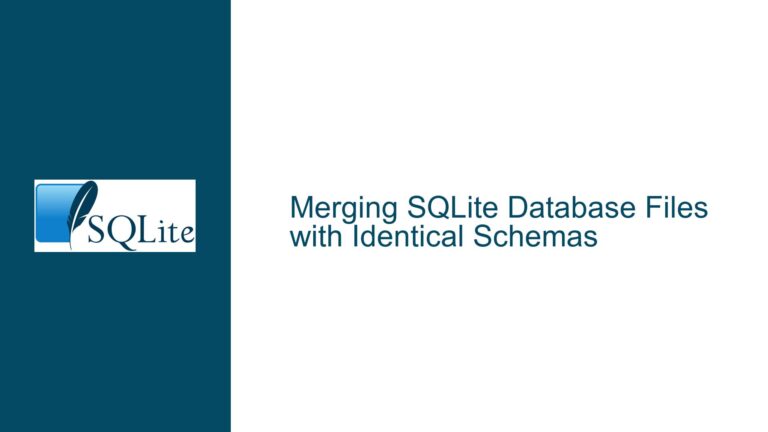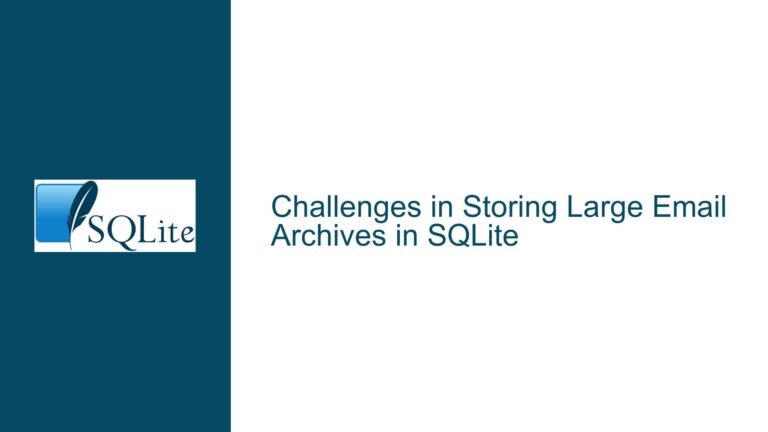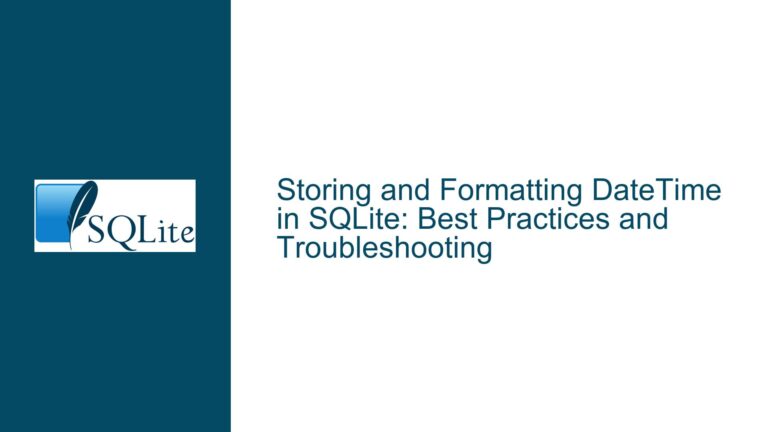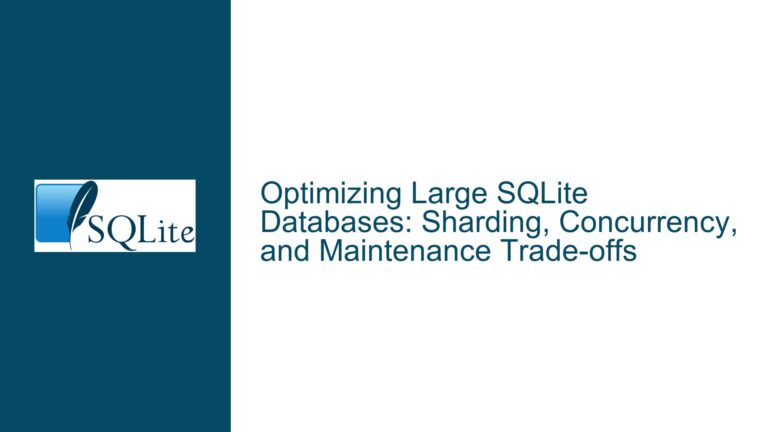Updating Multiple Rows in SQLite for Hierarchical Family Tree Data
Hierarchical Data Update Challenges in SQLite
When working with hierarchical data structures, such as family trees, updating multiple rows in SQLite can present unique challenges. In this scenario, the goal is to update the level field in a Generation table to reflect the correct hierarchical level of each individual in a family tree. The family tree is structured such that each generation doubles in size: the first generation has 2 parents, the next has 4 grandparents, then 8 great-grandparents, and so on. The initial approach involves updating the level field for all individuals in a specific generation, but the query fails to update all relevant rows when the number of individuals in a generation increases.
The core issue arises from the attempt to use a subquery within the UPDATE statement to dynamically determine which rows should be updated. The subquery is designed to identify the FatherID of individuals in the current generation, but it only updates the first matching row when multiple rows are returned. This behavior is due to the way SQLite handles subqueries in UPDATE statements, particularly when the subquery returns multiple rows.
Subquery Limitations and Hierarchical Data Modeling
The primary cause of the issue lies in the limitations of using subqueries in UPDATE statements when dealing with hierarchical data. In SQLite, a subquery in an UPDATE statement is expected to return a single value. When the subquery returns multiple rows, SQLite only uses the first row, leading to incomplete updates. This limitation becomes particularly problematic when dealing with hierarchical data structures, where multiple rows often need to be updated simultaneously.
Another contributing factor is the schema design. The current schema uses two tables: PersonTable and FamilyTable. The PersonTable contains a PersonID and a ParentID, while the FamilyTable contains FatherID, MotherID, and ChildID. The relationship between these tables is used to traverse the family tree. However, the schema does not explicitly model the hierarchical relationships between generations, making it difficult to perform updates that span multiple levels of the hierarchy.
The schema also lacks a clear mechanism for tracking the hierarchical level of each individual. The Generation table includes a level field, but it is not directly linked to the PersonTable or FamilyTable. This separation complicates the process of updating the level field, as the hierarchical relationships must be inferred from the ParentID and FatherID fields.
Implementing Recursive CTEs and Schema Refinements
To address these challenges, a combination of schema refinements and advanced SQL techniques is required. The first step is to refine the schema to better model the hierarchical relationships. This can be achieved by introducing a GenerationID field in the PersonTable and FamilyTable, which explicitly links individuals to their respective generations. This change simplifies the process of updating the level field, as the hierarchical relationships are now explicitly defined.
The next step is to use a Recursive Common Table Expression (CTE) to traverse the family tree and update the level field for all individuals in a specific generation. A recursive CTE allows for the traversal of hierarchical data structures by repeatedly applying a query to its own results. This approach is particularly well-suited for family trees, where each generation is a direct descendant of the previous one.
Here is an example of how a recursive CTE can be used to update the level field for all individuals in a specific generation:
WITH RECURSIVE GenerationTree AS (
-- Anchor member: Select the root generation (level 1)
SELECT
PersonID,
ParentID,
1 AS Level
FROM
PersonTable
WHERE
ParentID IS NULL
UNION ALL
-- Recursive member: Select the next generation
SELECT
p.PersonID,
p.ParentID,
gt.Level + 1
FROM
PersonTable p
INNER JOIN
GenerationTree gt ON p.ParentID = gt.PersonID
)
UPDATE Generation
SET Level = (
SELECT gt.Level
FROM GenerationTree gt
WHERE Generation.RootsNumber = gt.PersonID
)
WHERE EXISTS (
SELECT 1
FROM GenerationTree gt
WHERE Generation.RootsNumber = gt.PersonID
);
In this query, the GenerationTree CTE recursively traverses the family tree, starting from the root generation (where ParentID is NULL). Each iteration of the CTE selects the next generation by joining the PersonTable with the results of the previous iteration. The Level field is incremented with each iteration, reflecting the hierarchical level of each individual.
The UPDATE statement then uses the GenerationTree CTE to update the level field in the Generation table. The EXISTS clause ensures that only rows with a corresponding entry in the GenerationTree CTE are updated.
Schema Refinements
To further improve the schema, consider adding a GenerationID field to both the PersonTable and FamilyTable. This field can be used to explicitly link individuals to their respective generations, simplifying the process of updating the level field. Here is an example of how the schema could be refined:
CREATE TABLE PersonTable (
PersonID INTEGER PRIMARY KEY,
UniqueID TEXT,
Sex INTEGER,
EditDate FLOAT,
ParentID INTEGER,
SpouseID INTEGER,
Color INTEGER,
Relate1 INTEGER,
Relate2 INTEGER,
Flags INTEGER,
Living INTEGER,
IsPrivate INTEGER,
Proof INTEGER,
Bookmark INTEGER,
Note BLOB,
GenerationID INTEGER
);
CREATE TABLE FamilyTable (
FamilyID INTEGER PRIMARY KEY,
FatherID INTEGER,
MotherID INTEGER,
ChildID INTEGER,
HusbOrder INTEGER,
WifeOrder INTEGER,
IsPrivate INTEGER,
Proof INTEGER,
SpouseLabel INTEGER,
FatherLabel INTEGER,
MotherLabel INTEGER,
Note BLOB,
GenerationID INTEGER
);
With these refinements, the GenerationID field can be used to directly link individuals to their respective generations, eliminating the need for complex joins and subqueries. This approach also improves the performance of queries that involve hierarchical data, as the hierarchical relationships are now explicitly defined.
Performance Considerations
When working with large family trees, performance can become a concern. The recursive CTE approach is efficient for small to medium-sized trees, but may struggle with very large trees. To mitigate this, consider using indexes to optimize the performance of the recursive CTE. For example, adding an index on the ParentID field in the PersonTable can significantly improve the performance of the recursive join:
CREATE INDEX idx_PersonTable_ParentID ON PersonTable (ParentID);
Additionally, consider using materialized views to precompute the hierarchical relationships. A materialized view stores the results of a query, allowing for faster access to hierarchical data. Here is an example of how a materialized view could be used to store the results of the GenerationTree CTE:
CREATE TABLE MaterializedGenerationTree AS
WITH RECURSIVE GenerationTree AS (
SELECT
PersonID,
ParentID,
1 AS Level
FROM
PersonTable
WHERE
ParentID IS NULL
UNION ALL
SELECT
p.PersonID,
p.ParentID,
gt.Level + 1
FROM
PersonTable p
INNER JOIN
GenerationTree gt ON p.ParentID = gt.PersonID
)
SELECT * FROM GenerationTree;
The MaterializedGenerationTree table can then be used in place of the recursive CTE, improving the performance of queries that involve hierarchical data.
Conclusion
Updating multiple rows in SQLite for hierarchical data structures, such as family trees, requires a combination of schema refinements and advanced SQL techniques. By explicitly modeling hierarchical relationships in the schema and using recursive CTEs, it is possible to efficiently update the level field for all individuals in a specific generation. Additionally, performance can be improved through the use of indexes and materialized views. With these approaches, the challenges of updating hierarchical data in SQLite can be effectively addressed.
